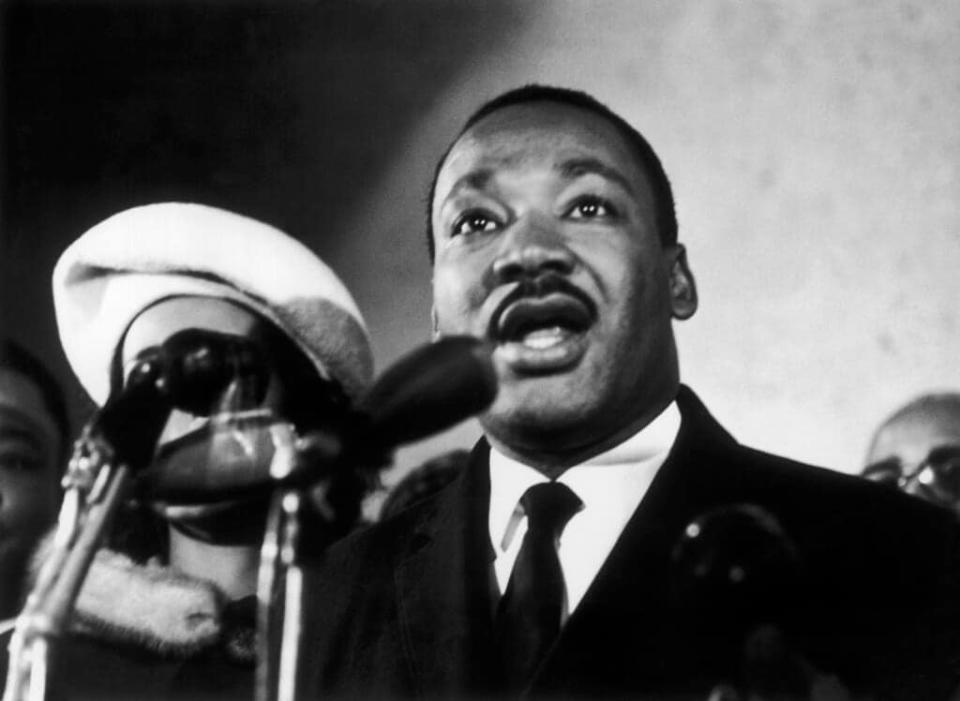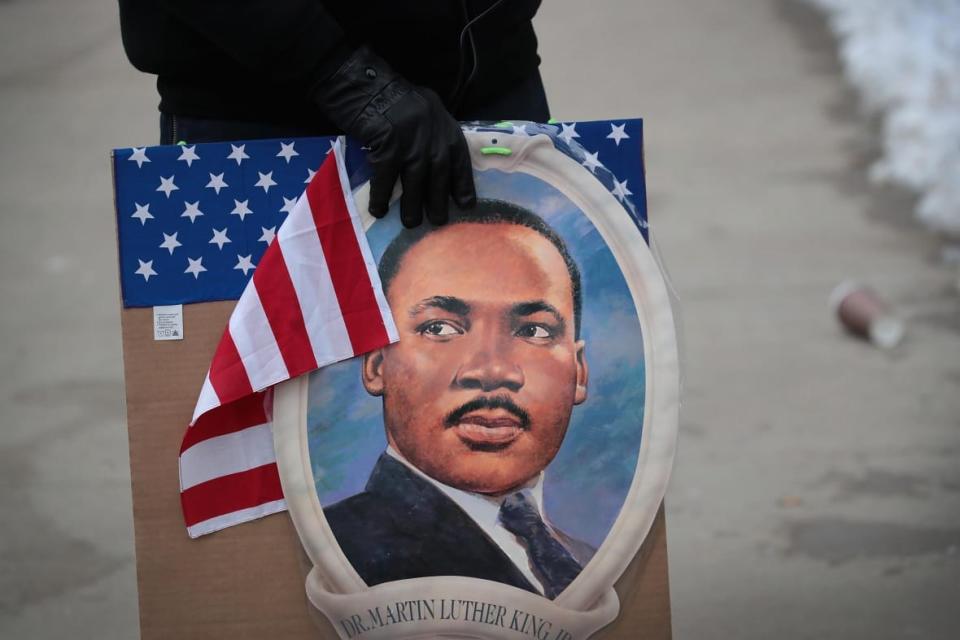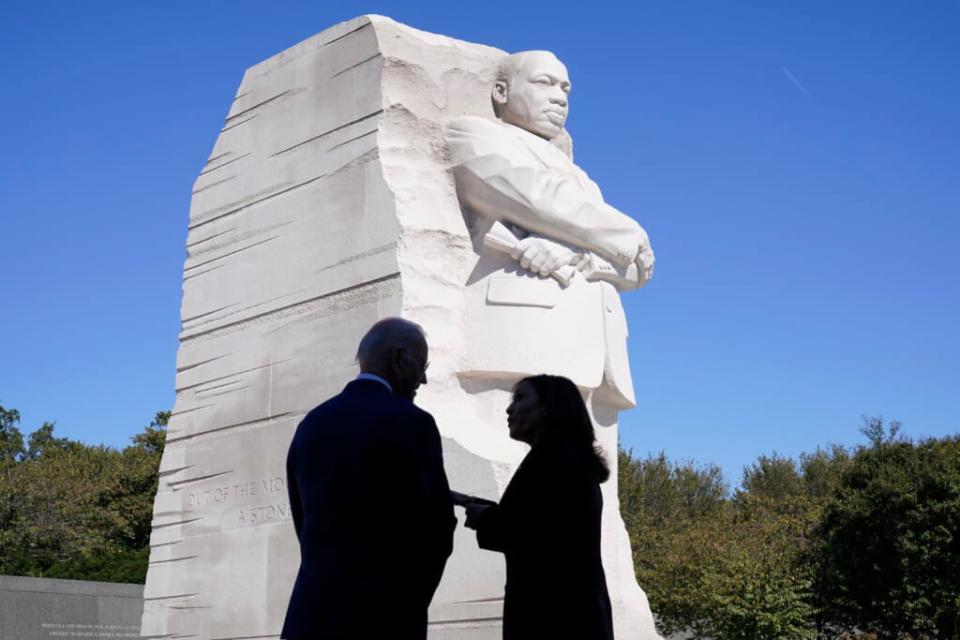Where does Black America stand in MLK’s vision for economic inclusion?
- Oops!Something went wrong.Please try again later.
- Oops!Something went wrong.Please try again later.
- Oops!Something went wrong.Please try again later.
“The problems of racial injustice and economic injustice cannot be solved without a radical redistribution of political and economic power,” said Dr. Martin Luther King Jr. in 1967.
In his final years of life, Martin Luther King Jr.’s deliberate fight against poverty and intentional push for economic inclusion for Black people, and other marginalized groups, resonated with the masses. So much so that while delivering “The Three Evils of Society,” his 1967 speech, a member of the audience at the National Conference on New Politics in Chicago yelled, “Martin Luther King for president!”
“The problems of racial injustice and economic injustice cannot be solved without a radical redistribution of political and economic power,” King said at the time.

As theGrio owner Byron Allen recalled at last year’s theGrio Awards, King’s wife Coretta Scott King believed his persistent and radical push for economic inclusion is “why they killed my Martin.”
Fifty-five years after King’s 1968 assassination, the economic conditions for Black Americans have somewhat improved.
“We have fewer people in poverty … and more Black people who are middle class,” Brookings Institution senior fellow Dr. Andre Perry said.
Strides have also been made in education, a critical pipeline to economic and social mobility for Black people.
“Since MLK died, we’ve seen an increase in educational attainment and closing educational gaps by and large,” said Perry, the author of “Know Your Price: Valuing Black Lives and Property in America’s Black Cities.”
While economic mobility trends for Black Americans do not extend as strongly to the upper middle class or higher economic ranks, “in terms of seeing a greater share of people who have decent jobs, have decent incomes … we’re improving,” says Perry.
Still, some economic measures expose glaring racial gaps.
“We’ve seen a small jump in homeownership in recent years, but the gap is still 30 points between Black and white,” Perry explained.

He continued: “Venture capital is an indicator of who we trust with money. We still see less than 2% of all venture capital going to Black people.”
Perry, a professor of economics at Washington University, also pointed to issues like lending disparities, appraisal bias and labor challenges in vital industries.
“In various tech sectors, Black people are not being hired, not being promoted,” he said.
Svante Myrick, president and CEO of the advocacy group People For the American Way, says economic barriers that existed when King was alive and those that persist today are a direct result of policy decisions by people in positions of power.
“This is what I think Dr. King knew,” Myrick told theGrio. “Other characters have come along since wrongly attributing it to cultural issues … Bill Cosby [was] walking around saying if you only picked up your pants that maybe you’ll make more money.”
He continued, “Well, we knew it wasn’t culture.”
Much like in modern times, King understood that cultural reasons weren’t why Black people were suffering economically, Myrick says.
“It was actually policy choices: redlining through exclusionary zoning; the highways that were built through Black neighborhoods; to the lynching of successful, Black business people,” he said.
The integration of Black Americans into the economic mainstream was “the next step beyond integration in our democracy — and we’re still not there yet,” Myrick said.
Perry notes that, when it comes to policy, Black Americans need “initiatives that will increase the amount of assets that we have, while simultaneously decreasing debt.”
So to what degree have the policies of the Biden-Harris administration lived up to the ideals of MLK’s vision of economic inclusion?
Myrick says President Joe Biden’s student debt forgiveness program is the administration’s greatest effort to advance racial equity on the federal level. He notes that debt forgiveness, which was modeled to significantly benefit Black households, is currently being “blocked by Republican judges.” However, the administration is “still trying to push it through.”
The Supreme Court will hand down a decision on Biden’s executive order later this year.

Myrick also called the Biden-Harris administration’s American Rescue Plan Act, passed in March 2021, “the largest investment since the New Deal in working people.”
“Anytime you invest in working people instead of corporations, you’re are going to disproportionately benefit Black Americans. ARPA, both with its stimulus payments, but also investments in state and local government funding, were a huge boon,” said Myrick, who also noted that “state and local government employees are also disproportionately Black.”
In terms of what more the administration can do to advance economic justice, Perry said, “If we can get more homeowners, business owners, people with 401K’s, while eliminating medical debt, student debt, then the Biden administration will serve Black people well.”
Perry said there are some “innovations that can occur in that space,” including encouraging banks to create loan bundles, like giving people mortgages while eliminating debt.
Eliminating housing bias, he said, would also open pathways to homeownership. Already during this administration, while not necessarily the doing of the Biden White House, there are new credit scoring systems that will be implemented, Perry said.
Lastly, he says addressing educational funding can go a long way.
“We still need to remove inequalities in educational funding … there are still massive gaps between predominantly white public schools and predominantly Black and brown schools,” Perry said. “So the more we can address those funding gaps, the better.”
TheGrio is FREE on your TV via Apple TV, Amazon Fire, Roku and Android TV. Also, please download theGrio mobile apps today!
The post Where does Black America stand in MLK’s vision for economic inclusion? appeared first on TheGrio.

